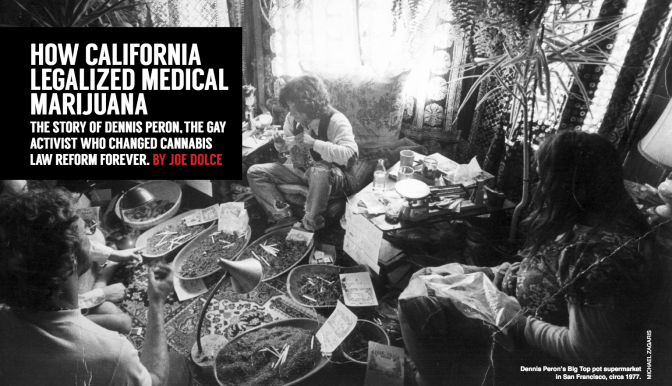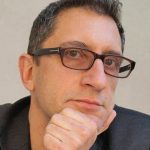
BRAVE NEW WEED: How California Legalized Medical Marijuana

 Stoners might guess Jefferson. They’ll cite his diary entries and the laws he passed exhorting American farmers to plant hemp. They incorrectly use those facts as proof that the Founding Fathers may have enjoyed a puff in between starting a revolution and establishing a country. Not true: Many countries at the time cultivated hemp for fiber, which they used to make sails, clothing and paper.
Stoners might guess Jefferson. They’ll cite his diary entries and the laws he passed exhorting American farmers to plant hemp. They incorrectly use those facts as proof that the Founding Fathers may have enjoyed a puff in between starting a revolution and establishing a country. Not true: Many countries at the time cultivated hemp for fiber, which they used to make sails, clothing and paper.
American television viewers would likely vote for Gupta. His 2013 CNN documentary Weed helped convince Americans that the plant is real medicine, and showed them how it could ameliorate symptoms of severe and rare diseases, such as Dravet syndrome.
The correct answer, however, is C and D, Dennis Peron and George Soros. This proxy marriage of a Vietnam vet, pot dealer, gay activist and onetime Republican candidate for governor of California and his billionaire supporter paved the way for California’s Proposition 215, the world’s first-ever medical marijuana law. Peron almost single-handedly reframed the plant—and the debate around it— from a reckless drug of rebellion to a botanical medicine, but his mission would likely have imploded without the deep pockets and deeper convictions of a few unwavering backers. Until Peron, pot advocates in the United States were spinning their wheels, arguing that citizens should have the right to intoxicate themselves in any way they see fit. While this argument is valid, it’s not all that persuasive. Fighting for the right to get stoned never resonated with soccer moms (or dads) who didn’t want their kids exposed
to yet another temptation, no matter how safe or natural it was. Peron tectonically shifted the paradigm, but outside of a small coterie of California activists, his story is little known.
I tracked down the self-proclaimed “fairy godfather of medical marijuana” in San Francisco, where he lives in a hulking Victorian known as the Castro Castle. I rang the doorbell at noon, as we had arranged the day before, but the gentleman who answered apologetically informed me that Dennis had to unexpectedly take his brother to the airport. He invited me into the kitchen, where I watched a bear of a chef in an apron cooking lunch for a group of men seated around a table in various states of undress, speaking different languages. The walls were a shrine to the king of this castle. There were photos of Dennis with Harvey Milk, Dennis in bell-bottoms addressing a rally, yellowed newspaper clippings of Dennis running for office. Was this a gay bordello? A commune? I didn’t ask. Instead, I retired to the back garden to await my audience.
I sat near a grotesque mural of Brownie Mary (Mary Jane Rathbun), one of Peron’s best friends and a local legend who was known as the city’s Florence Nightingale for distributing “magic brownies” to AIDS patients in city hospitals. With her gray hair and unfashionable eyewear, Mary may have looked like a kindly grandmother, but her scabrous re-marks made her a cause célèbre. “If the narcs think I’m going to stop baking pot brownies for my kids with AIDS, they can go fuck themselves in Macy’s window!” she announced to deafening cheers at a rally following one of her several arrests. With Mary’s image smiling insanely over my shoulder, I was handed a mug of tea by a handyman who informed me that the Castro Castle is in fact an inexpensive B and B frequented by travelers hungry for a taste of old-school San Francisco life.
Two cups of tea later, Peron joined me. With his short, neatly combed hair and button-down shirt, he looked more like a priest than a firebrand, and he sounded rather subdued, as well. A stroke in 2010 had reduced his voice to a raspy whisper, but the impish twinkle in his eyes signaled to me that this guy could still cause trouble.

In 1998, Dennis Peron ran as a Republican candidate for governor and lost.
Peron’s infatuation with pot began, as it did for many, in Vietnam, where his Air America unit was dispatched to the border to spy on the Ho Chi Minh Trail for the CIA. The Vietcong learned about the mission and rained mortar shells on Peron’s unit every night for a month. Constant bombardment taught Peron two things: (1) that sleeping could be fatal— this is one reason so many Vietnam vets suffered debilitating insomnia once they returned from war—and it was safer to lie awake at night; and (2) that he was gay. It was in the trenches that he first had sex with a man. Tour of duty over, Peron returned home with a duffle bag full of Thai weed. He grew out his crew cut, moved to a commune and dedicated himself to the vague goal of “helping America come to peace with itself.” (OK, it was the early 1970s.) Pot was the instrument through which he hoped to execute that unlikely reconciliation.
In the late 1970s, Peron flouted the law to open the Big Top pot supermarket in San Francisco, which quickly became the country’s largest cannabis retailer. It was so successful that Peron had $1 million in $20 bills stashed in a closet. Just as large bundles of cash make dispensary owners vulnerable to robbery
and paranoia today, they also did so back then, so when a horde of plainclothes policemen knocked down the door, Peron assumed he was being burgled. He hoisted a five-gallon water jug over his head to hurl down the stairs at his invaders, but the cops fired first, landing a bullet in his leg.
Given the looser laws of the Carter era, the 199 pounds of pot on the premises should have landed Peron in the clink for a few years. But when Officer Paul Makaveckas was asked at the trial to show the court how he fired the shot, he stood up in the witness box and aimed his pistol at Peron for a long 30 seconds. Then Makaveckas audibly lamented his faulty aim. A hit to the heart would have meant “one less faggot in San Francisco,” he said within earshot of lawyers.
That untoward remark won Peron a reduced seven-month sentence in county jail, an unyielding hostility to law enforcement and instant stature in the small but growing movement to legalize pot. Once out of jail, he authored Proposition W (for “weed”), which directed the district attorney to stop arresting San Franciscans for possessing, transferring or growing marijuana. The largely symbolic city ordinance passed overwhelmingly in 1978 with 63.7% of the vote.
After Mayor George Moscone and Supervisor Harvey Milk were gunned down by Dan White, a former cop who later somehow convinced a jury that an overdose of Twinkies had caused his diminished mental capacity, AIDS began its rampage and gay men began dying. The desperation was palpable. No one at the time knew what caused the scourge (it was still being misidentified as GRID, gay-related immunodeficiency disease), and there was no treatment for the Kaposi’s sarcoma (KS) that scarred people with purple lesions, or the PCP pneumonia that drowned them to death in their own sputum. When Peron’s partner, Jonathan West, was diagnosed in the late 1980s, there were always a few ounces of weed on hand to ameliorate his suffering.
One evening in 1990, just before midnight, 10 plainclothes narcotics officers in rubber gloves showed up at Peron and West’s home with a search warrant. The cops ransacked the apartment and forced Jonathan facedown onto the floor, boot-jacking his neck. “Know what AIDS stands for?” one of them asked. “Asshole in deep shit.” The cops arrested Peron for possessing four ounces of Humboldt green with intent to sell. At his trial, West—98 pounds, face mottled with purple KS lesions the size of grapes— testified that the pot was his. The judge dropped the charges and scolded the arresting officers. West died two weeks later and Peron channeled his fury into writing Proposition P (for “Peron”). It was the country’s first medical-marijuana initiative, and Peron was on a roll.
Activists (and politicians and actors) are typically blessed—or cursed—with a messianic self-belief that powers them forward despite good sense and the overwhelming odds against them. Their vocabularies are absent the word “compromise.” Peron, impetuous and at times bombastic and utterly uninterested in the formalities of law and regulation, is no exception. Provocation turned him on. But compassion was also a part of the equation. It’s no exaggeration to say that people with AIDS had been abandoned by the medical and political establishments and were left to fend for themselves. Peron’s next move was to rent a five-story building on Market Street and set up the Cannabis Buyers Club, the country’s first dispensary. Tacked to the wall of the office was a sign: THIS IS A FREE-DRUG WORKPLACE.

This card allowed entry into Dennis Peron’s Cannabis Buyers Club on Market St. in San Francisco.
The top two floors of the club were decked with comfortable, if raggedy, furniture. Meals cost one dollar, and liquid nutritional supplements were served to those who couldn’t hold down food. But it wasn’t décor or food that did the healing. George Zimmer, the founder of the clothing retailer Men’s Wearhouse and an early visitor to the Buyers Club, recalled that his strongest impression was the support the patients offered each other, since so many were pariahs, shunned by their families and isolated in spheres of loneliness. Even Peron’s parents supported the work he was doing. “My parents would get calls saying: ‘Your son is on TV! He is selling marijuana to AIDS patients,’” Brian Peron, Dennis’s younger brother, recalls. “My mom would say, ‘Good, they need it.’”
By 1995, the Cannabis Buyers Club had 4,000 members; the following year, membership tripled. The locale became a popular stop on the tourist circuit, and Peron kept the rules for admission loose. Anyone over 55 was automatically accepted—Dennis defended this practice by asking, “Don’t you think people that age have the right to decide what they want to treat their aches and pains with?”
Later that year, Peron altered the course of history by drafting another ballot initiative that allowed anyone suffering from any ailment for which marijuana provides relief to buy or grow the plant. The wording was intentionally vague—it allowed doctors to “recommend” cannabis for any condition they saw fit. (If the initiative had used the word “prescribe,” it would have been on a collision course with the federal policy that bars doctors from prescribing any illegal substance.)
There were 433,000 obstacles to turning Prop 215 (a.k.a. the “Compassionate Care Act”) into law—that was the number of signatures needed to get it onto the California ballot by April 1996. By January, with only three months to go before the deadline, the situation was looking dire. Peron’s ragtag band of volunteers was woefully behind; they claimed to have accrued 250,000 signatures, but in fact they only had 35,000, and most of them were fakes, copied out of the telephone book.
Enter Ethan Nadelmann, a Harvard-educated lawyer who had been eyeing the flailing effort from New York. Funded by the business magnate George Soros, Nadelmann’s organization—then called the Lindesmith Center and today known as the Drug Policy Alliance—had a goal even more quixotic than Peron’s: ending the War on Drugs.
And this is how the unlikely marriage between the martyr and the moneymen began, a quiet but necessary affiliation that has propelled the movement forward until this day.

